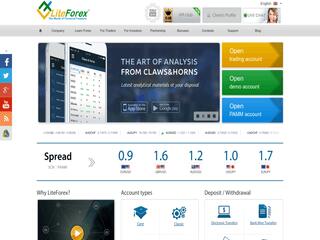
TRIN Index data is available for both the NYSE and NASDAQ markets. This is an example of how we can use extreme TRIN readings to predict sharp price reversals. In this example, with Apple’s stock, when the TRIN posted an extreme reading above 1.75 and below 0.5, a sharp price reversal occurred.
What is the tick index?
What is the Tick Index? The tick index compares the number of stocks that are rising to the number of stocks that are falling on the New York Stock Exchange (NYSE). The index measures stocks making an uptick and subtracts stocks making a downtick.
Before trading, clients must read the relevant risk disclosure statements on IBKR’s Warnings and Disclosures page. Any information posted by employees of IBKR or an affiliated company is based upon information that is believed to be reliable. However, neither IBKR nor its affiliates warrant its completeness, accuracy or adequacy. IBKR does not make any representations or warranties concerning the past or future performance of any financial instrument.
Barchart Technical Opinion
This way, for instance, the number of advancing stocks divided by the number of declining stocks will show one trend. And, the volume of advancing stocks divided by the volume of declining stocks will show another trend. Further, we will find out advancing and declining stocks and advancing and declining volume of stocks. The Arms Index has a few mathematical peculiarities that traders and investors should be aware of when using it. Since the index emphasizes volume, inaccuracies arise when there isn’t as much advancing volume in advancing issues as expected.

Here we also want to look at these percentages but we find its more useful to look at 85% and 95.4%. That means that we are looking at cases where we have a 85% or 95.4% chance of reversion to the mean giving us excellent odds at winning on either up or down days. The second ratio is the ratio between the stock volume of advancing and declingin stocks. Not only has the Better TRIN been one of the best indicators I’ve looked at, but for only $70 with a nice follow up email, it seems too good to be true! I’ve found it extremely useful when applied to some of my trend following systems, its addition increased my profit factor and avg $ per trade substantially!
This page contains information regarding Options Trading
A TRIN index below 1.0 is usually a bullish sign, indicating that the market is advancing. However, it is important to understand the peculiarities of the TRIN formula because there are some circumstances where it can generate false signals. Traders look not only at the value of the indicator but also at how it changes throughout the day. They look for extremes in the index value for signs that the market may soon change directions. Conversely, a TRIN value that dips below 0.50 may indicate an overbought market and that bullish sentiment is overheating. If you carefully observe any bar chart, you can see that even when the stock price is trending upwards or downwards, the price is actually ranging.
- The TRIN signals overbought and oversold levels that will indicate when stocks are most likely to change direction.
- Because a value of 1.0 means that the AD Ratio is equal to the AD Volume and that up volume is evenly distributed over advancing stocks.
- The risk of loss in online trading of stocks, options, futures, forex, foreign equities, and fixed income can be substantial.
- Based on the value of TRIN, a trader can find out if there is an upward or downward trend in the market and can make decisions to trade accordingly.
- The result, 0.67, is a strong bullish reading confirming this calculation’s bullish inputs of 2 to 1 Advancing Issues and 3 to 1 Advancing Volume.
They were only in a position 54% of the time and produced 441% returns compared to a buy and hold strategy of 192% return. They note that the TRIN is a good measure of the market fear and a good indicator for market bargains. Robert Nurock (from WallStreetWeek TV) uses the TRIN in his Wall Street Week Index and considers a 10 day moving average reading above 1.2 to be bullish and a reading below 0.8 to be bearish. You can build a very useful oscillator by cumulating the adjusted TRIN readings and then measuring the distance from a moving average. I then use some simple mathematics to sharpen up the turning points and make the indicator crystal clear to interpret.
US traders welcome at these brokers:
In mid-July 2007 the market was still advancing but the Better TRIN Oscillator had made a lower High – an early warning signal of a 160 point drop in the Emini. Then in mid-August the Oscillator made higher Lows while the market was still dropping – again, an early warning signal of an important market turning point. An even more powerful way of using the Better TRIN Oscillator is to follow divergence patterns against price. For example, a Bullish divergence pattern is made when the Oscillator makes higher Lows but price is making lower Lows. To see how clear the signals are using the Better TRIN Oscillator, compare it to the commonly used RSI. Daily Emini bars are shown at the top of the chart above, then the Better TRIN Oscillator and at the bottom of the chart is the built-in TradeStation RSI.

Even though it generates plenty of signals, it is preferable to trade in the direction of the underlying trend. Short-term traders can use the unmodified Arms Index to generate short-term signals or apply a 10-day SMA to generate more medium-term signals. The Arms Index is just one indicator; chartists should employ other aspects of technical analysis to confirm or refute signals generated. Richard W. Arms, Jr. invented the TRIN in 1967, and it measures the relationship between market supply and demand. It serves as a predictor of future price movements in the market, primarily on an intraday basis.
Regulated Brokers: Where Can I Trade Commodities?
We will use TRIN along with bollinger bands to create a trading strategy which generates signals of buy and sell according to the crossover of these indicators. We use the S&P500, DJI and NASDAQ-100 price data in this strategy and find that it generates a decent return with low maximum drawdowns. The Arms Index is a volatile breadth indicator that can be used to generate overbought and oversold signals.
These extreme levels are often an early indication a reversal is likely on the horizon. Other popular volume indicators include the On-Balance Volume and Chaikin Oscillator. On-Balance Volume (OBV) is a popular leading indicator introduced in the 1960s by Joe Granville. https://forexhero.info/what-is-arum-capital/ It looks for instances of rising volume that should correlate with price movement, but price movement has not occurred; additionally, OBV can be used to confirm lag. We will get different triggers looking at different numbers of stocks, which seems obvious.
How to Calculate the Arms Index (TRIN)
Notice how as the Nasdaq 100 spikes to the downside the TRINQ also reaches levels above 1.5. Of course, by using math and an imagination, a trader could come up with various other combinations. By reversing the previous scenario and making Advancing Issues stronger by a ratio of 2 to 1 and Advancing Volume stronger by a ratio of 3 to 1, the status quo interpretation of the Arms Index is found. In addition, a trader might consider waiting to see a reverse or bottoming of the Arms Index before taking such action. Also, notice that when the mini-Dow is increasing, the Arms Index is decreasing.
What is the 10 day TRIN?
The Open-10 TRIN is a smoothed variation of the Arms Index. It is a market breadth indicator that uses advancing/declining volume and advancing/declining issues to measure the strength of the market.
The example above shows the S&P 500 in an upward trend for one year. As the S&P was trending upwards, the TRIN indicator was below 1.0, further confirmed by the double exponential moving averages. The TRIN indicator is particularly beneficial when day trading or swing trading. Traders look at the value of the indicator and how it changes throughout the day.
What does the index tell you?
An index is a group or basket of securities, derivatives, or other financial instruments that represents and measures the performance of a specific market, asset class, market sector, or investment strategy.